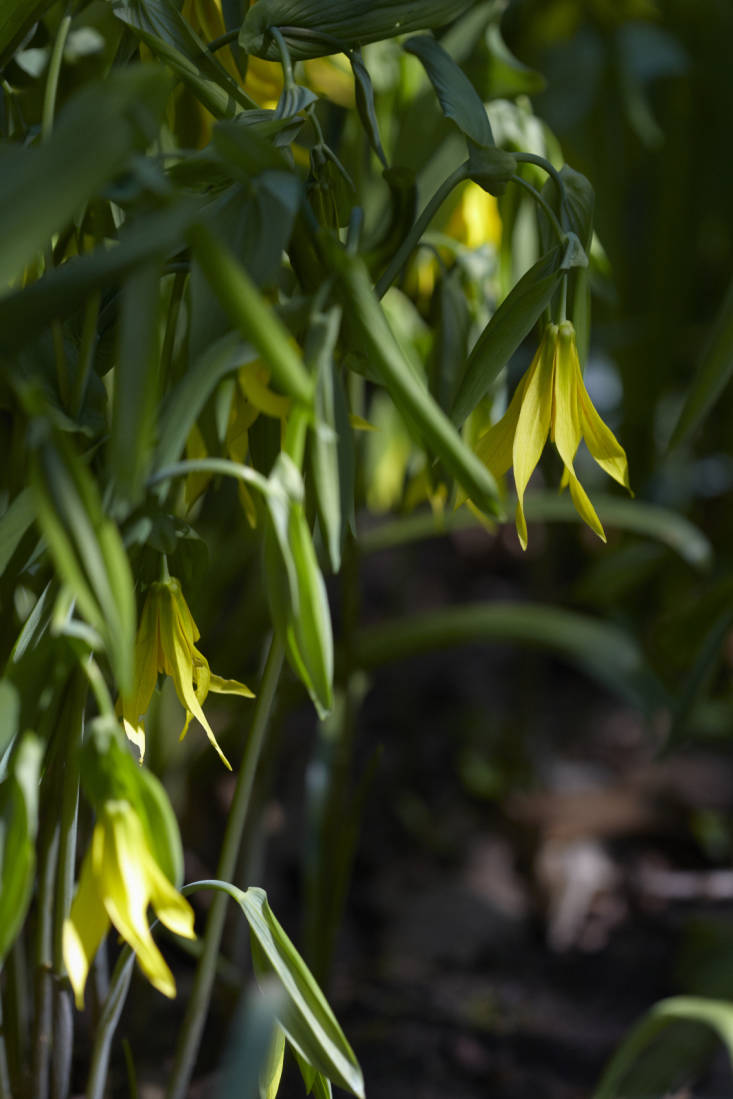Largeflower Bellwort, Uvularia grandiflora: ‘The Bias Cut’
Spotted in a woodland garden, largeflower bellwort is like a freeze-frame of spring’s great unfurling. At flowering time, blooms and foliage are both whorled, at which point they pause, while everything else charges upwards and outwards. Vase-shaped clumps of Uvularia grandiflora are quietly showy, in structure and color.
Like a lily (to which it is related), the outer parts of a bellwort flower manifest as tepals: not strictly petals in other words, and without a casing of sepals. Instead of opening out into trumpets, the narrow, twisted tepals hang down like unstructured gowns, perfectly complemented by narrow, curling leaves.
Photography by Britt Willoughby Dyer.

Largeflower bellwort (also known as great merrybells) is native to eastern North America as far south as Georgia. The flowers are only about 1 1/2-inches long; the name mainly distinguishes it from the smaller form, Uvularia perfoliata, whose spread is more central, reaching from Ontario to Florida.

Cheat Sheet:
• Flowering in mid to late spring when it has reached about 1-foot high, largeflower bellwort puts on more height when the flowers are over. Attractive to solitary bees and generally untroubled by insects classed as ‘pests’, Uvularia grandiflora is a reliable performer, with an RHS Award of Garden Merit.
• The arching stems have the appearance of piercing through the leaves, which grow alternately, culminating in one or two flowers.
• The cultivar U. grandiflora var. pallida is a paler yellow, with showier flowers that bloom slightly later.

Keep It Alive:
• Imitate its natural environment by giving it a sheltered situation dappled or full shade, in hummus-rich soil. This is easily achieved when bellwort grows in the leaf litter of deciduous trees, in conditions that are moist, but well-drained.
• Clump-forming, bellwort grows from rhizomes. It can be slow to propagate naturally (from seed that is carried by ants) but it recovers well from rhizome division in early spring or fall. A long-living perennial.
• Either hardy between USDA zones 3-7 or 4-9 (there is some debate; worth checking your specific area). Deer like the young shoots.


For more Gardening 101 guides, see:












Have a Question or Comment About This Post?
Join the conversation (0)